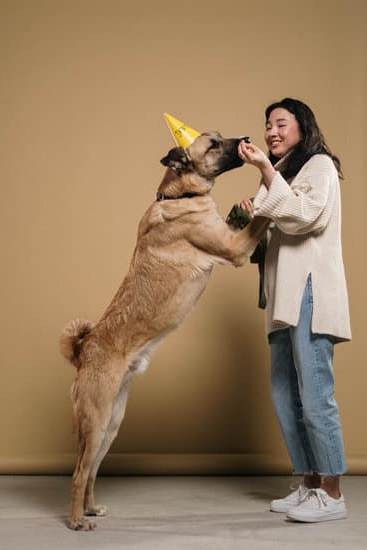Training a dog to come back off-lead is an essential skill for any dog owner, ensuring safety and freedom for both the pet and the owner. This crucial training can prevent accidents, build trust, and enhance the bond between you and your furry friend. With the right techniques and tools, teaching your dog to return reliably when off-leash can be a rewarding experience.
Understanding the basics of recall training is fundamental before embarking on this journey. Establishing a strong foundation of trust and communication with your canine companion is key to successful off-leash training. By choosing the appropriate training tools, creating a positive training environment, and following a step-by-step guide, you can effectively teach your dog to come back off-lead.
In this comprehensive guide, we will delve into the principles of recall training, discuss essential equipment like harnesses and long leads, provide practical exercises for effective training sessions, troubleshoot common challenges that may arise, and emphasize the importance of reinforcing good behavior consistently. By mastering these techniques, you will enable your furry companion to enjoy their freedom while staying safe and connected to you at all times.
Understanding the Basics of Recall Training
Recall training is a crucial skill to teach your dog, especially when it comes to allowing them the freedom to roam off-leash. By teaching your furry friend to come back when called, you are not only ensuring their safety but also strengthening the bond between you and your pet. Understanding the basics of recall training is essential for successful off-leash adventures with your four-legged companion.
Here are some key principles to keep in mind when training your dog to come back off-lead:
- Consistency is key: Use the same command every time you call your dog back, such as “come” or “here.” This will help them associate the word with returning to you.
- Positive reinforcement: Reward your dog with treats, praise, or toys when they come back to you. This will make them more likely to repeat the behavior in the future.
- Start small: Begin recall training in a quiet, familiar environment with minimal distractions. As your dog becomes more reliable, gradually increase the level of difficulty by adding distractions or practicing in new locations.
By understanding these basic principles and concepts of recall training, you can effectively teach your dog how to come back off-lead. Remember that patience, consistency, and positive reinforcement are key components in successfully training your furry friend for off-leash adventures.
Establishing a Strong Foundation
Creating a Connection Through Positive Reinforcement
One of the fundamental aspects of training your dog to come back off-lead is building a strong bond based on trust and positive reinforcement. Dogs respond well to rewards such as treats, praise, and playtime, so incorporating these into your training sessions can help strengthen the connection between you and your furry friend. By using positive reinforcement, you are not only encouraging good behavior but also fostering a deep sense of trust and cooperation with your dog.
Consistency is key when it comes to building a strong foundation with your dog. Make sure to set clear boundaries and rules from the start, being consistent in your commands and expectations. Dogs thrive on routine, so establishing a predictable training schedule can help them feel secure in their environment. This consistency will also help reinforce the bond between you and your dog, making them more responsive to your cues when off-lead.
Building Confidence Through Communication
Communication is essential in any relationship, including the one you have with your canine companion. When training your dog to come back off-lead, it’s important to use clear signals and cues that they can easily understand.
Whether you choose verbal commands, hand signals, or a combination of both, consistency in communication will help build trust between you and your dog. Additionally, paying attention to your body language and tone of voice can further enhance the effectiveness of your communication during training sessions.
Trust is the foundation of any strong bond, especially between a pet parent and their dog. To gain your dog’s trust, it’s crucial to show them love, patience, and understanding throughout the training process.
By creating a safe and nurturing environment for your furry companion, you are laying the groundwork for successful recall training off-lead. Remember that building trust takes time and effort, but the rewards of a strong bond with your dog are priceless in the end.
Choosing the Right Training Tools
Training a dog to come back off-lead requires not only patience and consistency but also the right training tools. Choosing the appropriate equipment can make a significant difference in the effectiveness of your recall training. One essential tool for off-lead training is a reliable harness that fits comfortably on your dog. A harness provides better control and prevents neck injuries that are common with traditional collars.
Another important piece of equipment for off-lead training is a long lead. A long lead allows you to give your dog more freedom while still maintaining control during training sessions.
It gives your dog the sensation of being off-leash while providing you with the security of being able to quickly regain control if needed. Be sure to choose a long lead that is lightweight yet durable, and always supervise your dog when using it to prevent accidents or tangling.
In addition to harnesses and long leads, other essential equipment for off-lead training includes high-value treats, a clicker for positive reinforcement, and possibly a whistle for calling back your dog from a distance. These tools can help you communicate effectively with your furry friend during training sessions and reinforce their behavior when they come back to you off-lead successfully.
| Training Equipment | Importance |
|---|---|
| Harness | Provides better control and prevents neck injuries |
| Long Lead | Gives freedom while maintaining control during training sessions |
| High-Value Treats, Clicker, Whistle | Aids in communication and positive reinforcement during training |
Creating a Positive Training Environment
When it comes to training your dog to come back off-lead, creating a positive training environment is crucial for success. Selecting the right location and time for your training sessions can make a significant difference in your dog’s ability to focus and learn effectively. Here are some tips to help you create an optimal training environment for teaching your dog to come back off-lead:
- Choose a quiet and familiar location: Select a quiet and familiar location where your dog feels comfortable and at ease. This will help minimize distractions and allow your dog to focus on the training exercises.
- Pick the right time of day: Consider your dog’s energy levels and schedule training sessions during times when they are most alert and focused. For many dogs, early morning or late afternoon tend to be ideal times for training.
- Avoid busy or crowded areas: When teaching your dog to come back off-lead, avoid busy or crowded areas where there may be too many distractions or potential safety hazards. Opt for quieter spaces where you can have more control over the training environment.
By following these tips and choosing the right location and time for your training sessions, you can set yourself up for success in teaching your dog how to come back off-lead. Consistency, patience, and positive reinforcement are key elements in effective recall training.
Remember that every dog is unique, so it may take some trial and error to find the perfect training environment that works best for you and your furry companion when practicing how to train a dog to come back off lead.
Step-by-Step Training Guide
Training a dog to come back off lead is a crucial skill that every pet owner should prioritize. Whether you’re at the park, on a hike, or just enjoying time outdoors with your furry friend, having reliable recall can ensure their safety and enhance your bond. However, off-lead training requires patience, consistency, and the right approach to be successful.
One of the first steps in teaching your dog to come back off lead is to establish a strong foundation of trust and communication. This means building a bond with your dog based on positive interactions, clear cues, and rewarding good behavior. By creating a relationship built on trust, you can make it easier for your dog to respond when called even in distracting environments.
In addition to building trust, using the right training tools can also play a key role in successful off-lead training. Harnesses and long leads can provide additional control while allowing your dog some freedom to roam. It’s important to choose equipment that is comfortable for your furry companion and fits securely to prevent any accidents or injuries during training sessions.
| Relevant Training Techniques | Importance |
|---|---|
| Use positive reinforcement like treats, toys, and praise | Creates motivation for your dog to come back when called |
| Practice recall exercises in gradually more challenging environments | Builds up reliability in real-life situations |
| Avoid punishment or negative reinforcement for not coming back immediately | Keeps training sessions positive and maintains trust between you and your dog |
Troubleshooting Common Challenges
Dealing With Distractions
One common challenge when training a dog to come back off-lead is dealing with distractions. Dogs are naturally curious and easily distracted, especially when they are not on a leash. To address this challenge, start by gradually introducing distractions during training sessions. Begin in a quiet and familiar environment, then slowly add more challenging distractions such as other dogs, people, or toys. This will help your dog learn to focus on you despite the surrounding distractions.
Handling Disobedience
Another common obstacle in training your dog to come back off-lead is disobedience. Your dog may choose to ignore your recall command, which can be frustrating for both of you. To tackle disobedience, avoid scolding or punishing your dog when they do not come back immediately.
Instead, use positive reinforcement techniques such as treats or praise when they respond correctly. Consistency is key here – make sure to always reward your dog when they come back to you, even if it takes some time.
Overcoming Other Training Obstacles
In addition to distractions and disobedience, there may be other obstacles you encounter while teaching your dog to come back off-lead. Some dogs may have issues with fear or anxiety that hinder their recall training progress. If this is the case, consider seeking professional help from a certified dog trainer who specializes in behavior modification. They can provide guidance on how to address these specific challenges and tailor a training plan that suits your dog’s individual needs.
Reinforcing Good Behavior
Training your dog to come back off-lead is a crucial skill that can ensure their safety and your peace of mind when in open spaces. By following the key principles and concepts of recall training, you can establish a strong foundation built on trust and a strong bond with your furry friend. But the journey doesn’t end there; it’s essential to reinforce good behavior to maintain consistent training and celebrate success along the way.
Consistency is key when it comes to reinforcing good behavior in your dog. Make sure to practice recall exercises regularly, gradually increasing the level of difficulty as your dog becomes more proficient. Celebrate each successful recall with praise, treats, or playtime to positively reinforce the behavior. By consistently rewarding good behavior, you are encouraging your dog to continue coming back off-lead in various situations.
In addition to consistency, patience and understanding are also vital components of reinforcing good behavior in your dog. Remember that every dog is unique and may require different approaches or timeframes for learning how to come back off-lead effectively.
Be patient with your furry companion as they navigate through the training process, offering them support and encouragement every step of the way. With dedication and positivity, you can successfully train your dog to come back off-lead and enjoy exploring the world together safely and joyfully.
Frequently Asked Questions
How Do I Train My Dog to Come Back When Off the Lead?
Training a dog to come back when off the lead involves consistency, positive reinforcement, and patience. Start in a quiet area without distractions, use a cue word or whistle, and reward your dog with treats or praise when they return. Gradually increase the distance and practice in different environments.
How Do I Get My Dog to Come Back Lead?
Getting your dog to come back on lead requires building a strong foundation of recall training. Use a long line to prevent your dog from running away, reinforce coming back with high-value rewards, such as treats or toys, and avoid punishing or scolding your dog for not returning promptly.
What to Do if Dog Ignores Recall?
If your dog ignores recall, it’s important not to chase or punish them as it can create negative associations with coming back. Instead, work on reinforcing the recall command in low-distraction environments before gradually progressing to more challenging situations. Consistency and positive reinforcement are key in improving your dog’s response to recall cues.

Welcome to the blog! I am a professional dog trainer and have been working with dogs for many years. In this blog, I will be discussing various topics related to dog training, including tips, tricks, and advice. I hope you find this information helpful and informative. Thanks for reading!





